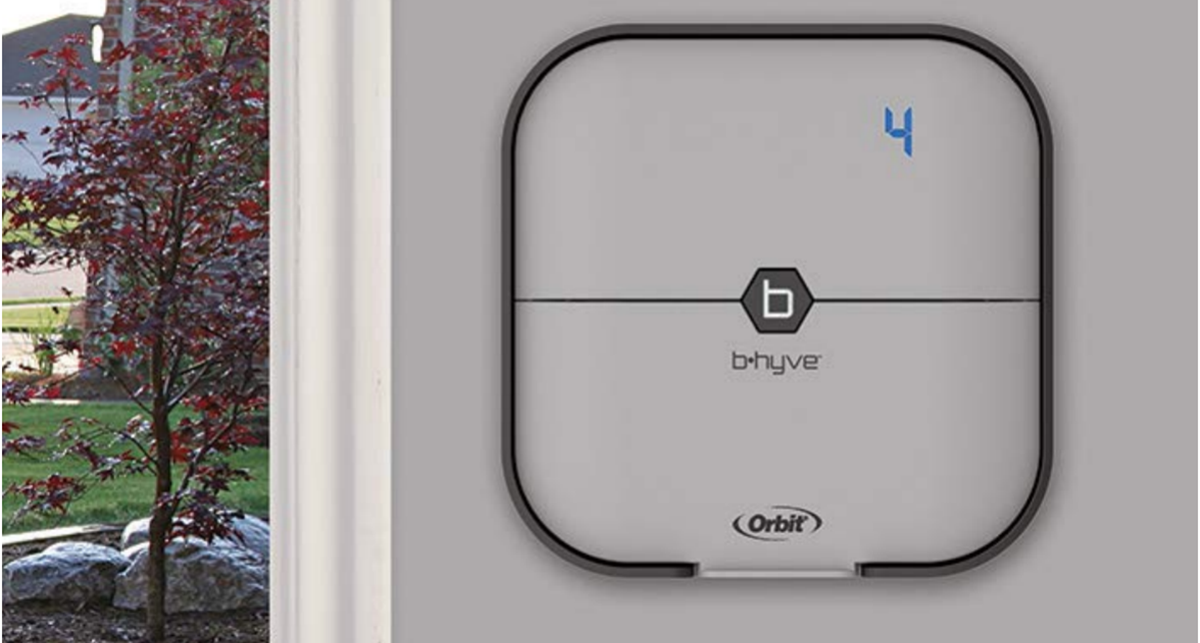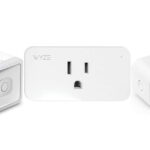Smart sprinkler controllers have grown in popularity and are replacing their traditional counterparts. They allow you to curate the lawn of your dreams effortlessly. These devices automate the lawn watering process without requiring manual intervention. Smart sprinkler controllers also take the guesswork out of lawn irrigation. They use weather forecasts and data for watering your plants appropriately. Like other intelligent devices, smart sprinklers controllers have become essential for modern homes.
What is a Smart Sprinkler Controller and How Does It Work?
A smart sprinkler controller is an intelligent device used to automate the process of irrigating your lawn or yard. It may replace your existing sprinkler controller or work in tandem with it. There are full-fledged irrigation systems with smart sprinkler controllers available as well. They are suitable for homes that need to install the system from scratch.
Smart sprinkler controllers go beyond irrigating your yard based on a schedule or a timer. They take into account weather conditions, vegetation, soil’s type and moisture content, temperature, slope, and amount of shade or sunlight in the yard for intelligently irrigating the plants. An AI algorithm uses data available online through the service provider along with user inputs to determine an ideal watering schedule for your garden. If there is a forecast of rain, it may skip watering altogether, and if the day is going to be hot, extra water may be provided to your yard. Smart sprinkler controllers may have integrated Wi-Fi for accessing the Internet and gaining local weather information. Users can also operate them remotely through a smartphone app.
Some plants may require more water as compared to others. Giving a plant too much or too little water may cause it to wither and die. Plants in the shade may require less water as compared to those receiving direct sunlight. If there is a slope, then the irrigation may have to be adjusted to minimize soil erosion. Irrigating the garden in strong winds may be unwise for preventing water loss. A smart sprinkler controller can take care of these intricacies without requiring the user to intervene manually. It may have a water flow meter that measures the amount of water for judicious use and preventing wastage while giving you the yard of your dreams.
Things to Consider When Buying A Smart Sprinkler Controller
Choosing a smart sprinkler controller does not have to be complicated. Here are a few things to consider when buying a smart sprinkler controller.
1. Number of Zones – A primary specification to consider in a smart sprinkler controller is the number of zones it supports. The most popular ones feature four, eight, or sixteen zones. All irrigation systems are divided into areas known as zones. Each zone can be defined as a particular area of your lawn or yard with specific water needs. Different plants have varying water requirements. The irrigation recommendations for your grass may be disparate from your shrubs and trees. You can define different zones for your yard. The smart sprinkler controller can be set to provide more water to one zone and less water to another. Different schedules can be set for each zone.
Zones can be set based on slope, amount of sunlight or shade received, and other factors in addition to the vegetation type. You can also use different types of sprinkler heads for each zone, depending on the irrigation requirements. The right number of zones for you will be based on your yard and the vegetation. Your landscaper can assist in determining the same. Prioritize a smart sprinkler controller that supports adequate zones for your current requirements and future expansion possibilities.
2. Sprinkler System Compatibility – If you are buying a smart sprinkler controller, make sure that it is compatible with your existing sprinkler system. Generally, you will be replacing the existing controller with the intelligent one. These devices are designed to work with only underground sprinkler systems that feature a control unit. Most users will be able to install the same as long as they are compatible. However, if you want to install a new sprinkler system, you might have to seek professional help. Building a system from scratch will involve zoning and laying underground pipes. You will be better off hiring a landscaping expert.
3. Sensors Supported – If you want to enhance the functionality of a smart sprinkler controller, then consider the sensors that it supports. Relying on weather data alone may be problematic as it won’t be accurate 100% of the time. Additional sensors can enhance the functionality of smart sprinkler controllers. Most of them work with soil moisture sensors. They measure the actual moisture content of your garden or yard and adjust irrigation patterns accordingly. It ensures that your garden receives customized care according to its needs and not just based on weather and environment.
There are two types of moisture sensors – Suspended-cycle and Water-on-demand systems. A suspended cycle moisture sensor system prevents the lawn from being watered if the moisture content of the soil is too high. Your smart sprinkler controller will water the lawn according to a schedule. However, if the sensor detects that the moisture is adequate, it will interrupt the programming and prevent the irrigation. The downside with this is that it won’t increase the amount of water the plants receive if the moisture content is too low. A water-on-demand moisture sensor can be used to detect both high and low moisture conditions. It will prevent irrigation when the moisture is adequate and ensure extra watering of the plants if the moisture content is too low. Water-on-demand systems ensure proper irrigation and are great for sensitive vegetation in temperate environments.
Some systems use humidity and rain sensors to detect rain instead of relying on weather forecasts alone. You will have to install the same separately and attach it to the smart sprinkler controller. It may be suitable for scenarios wherein having a constant internet connection is not possible. Temperature sensors may also be employed by smart sprinkler controllers. A few soil sensors may have the ability to measure temperature as well. The system can use them to increase or decrease irrigation according to the environmental temperature. They can shut off the system if the temperature drops below 0° to prevent the water in the pipes from freezing.

4. Controlling Mechanism – Buyers may want to consider the controlling mechanism supported by a smart sprinkler system. Most of them require you to install an app on your Android or iOS smartphone. You can create schedules, set timers, receive alerts, and control the smart sprinkler system remotely. They must be connected to a Wi-Fi network for the same. A few of them may also have a control panel with buttons for manual operation. It can be useful if you want your gardener or someone else to turn on the sprinkler system when required. Choose a smart sprinkler controller system that you can control easily. Consider a model that supports a manual override for physical operation in addition to a smartphone app.
5. Operation Modes – Users should check the operating modes supported by a smart sprinkler controller. While most models require an internet connection to function efficiently, there may be situations wherein providing 24×7 Wi-Fi access may not be possible. Many of the models can work without Wi-Fi connectivity as well. They can store the app-set programs and irrigate the yard according to the same. Quite a few of them can work through Bluetooth in addition to Wi-Fi. The only limitation of Bluetooth is that the smartphone must be close to the smart sprinkler controller, up to a few feet. It is a viable option when a wireless network is unavailable. A few controllers may only support Bluetooth and won’t allow remote access as it requires a Wi-Fi connection for Internet access.
6. Smart Assistant Integration – Most smart sprinkler controllers, like modern intelligent devices, support one or more virtuals assistants. You may be able to control them through Amazon Alexa, Google Assistant, or Siri. A simple voice command will be adequate for turning the irrigation system on or off. You can even control them remotely when you are away. Make sure that the smart sprinkler system supports your preferred virtual assistant.
Buyers should consider the quality of smart sprinkler controllers. The model should have good construction and be backed by an adequate warranty or guarantee. Individuals must decide a budget depending on the features they are looking for in a smart sprinkler controller and the amount they are willing to spend. Over expensive and cheap products must be avoided.




